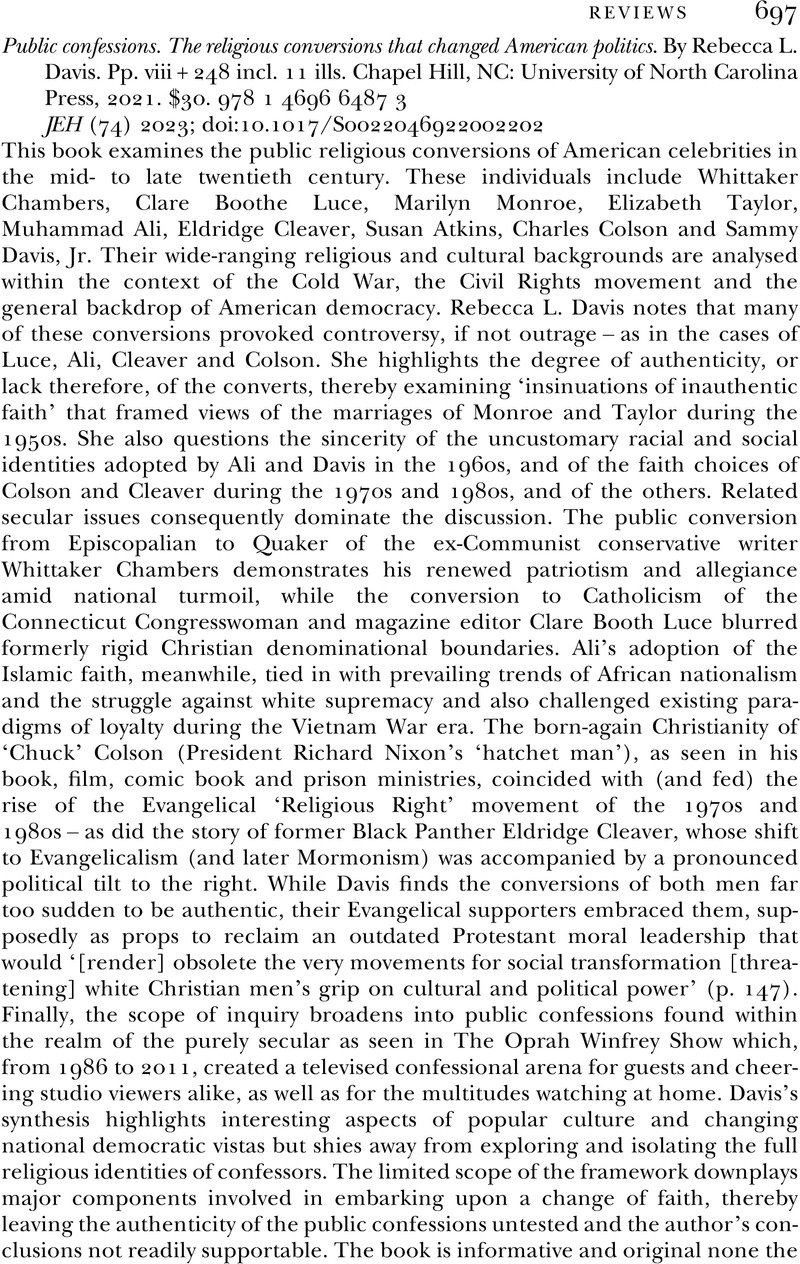No CrossRef data available.
Article contents
Public confessions. The religious conversions that changed American politics. By Rebecca L. Davis. Pp. viii + 248 incl. 11 ills. Chapel Hill, NC: University of North Carolina Press, 2021. $30. 978 1 4696 6487 3
Review products
Public confessions. The religious conversions that changed American politics. By Rebecca L. Davis. Pp. viii + 248 incl. 11 ills. Chapel Hill, NC: University of North Carolina Press, 2021. $30. 978 1 4696 6487 3
Published online by Cambridge University Press: 05 July 2023
Abstract
An abstract is not available for this content so a preview has been provided. Please use the Get access link above for information on how to access this content.

- Type
- Reviews
- Information
- Copyright
- Copyright © Cambridge University Press 2023



